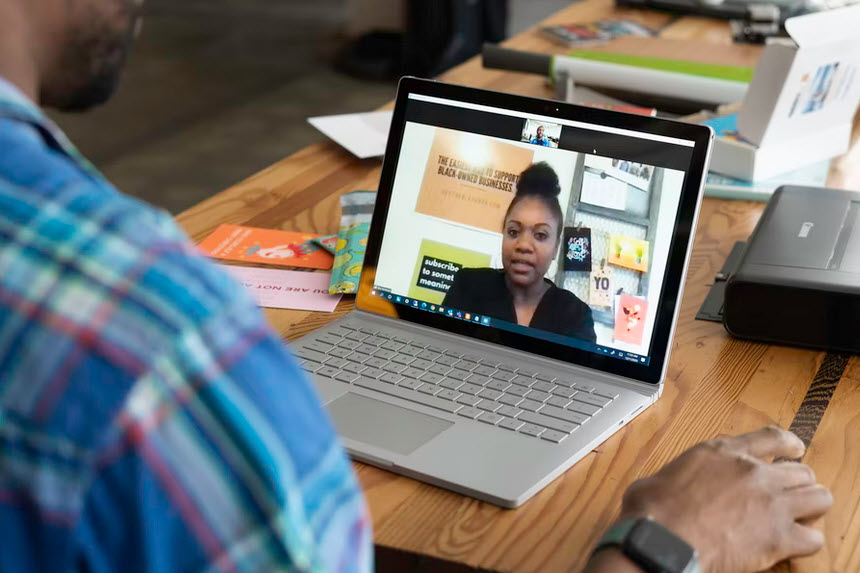Over the pandemic, several instructors have commonly requested assistance with recording dialogues for PBLA activities, assessments, reading practice or listening activities. In this post, I have detailed the steps. These steps focus on preparing a listening dialogue for a class activity. I am sure that many instructors and students have devised their own hacks for this issue, so if you have invented better methods, please add them to the comments below.
Continue readingTag Archives: learning
Multimedia English Class with Ted Talks
Teaching research writing and communication courses has been one of the best experiences I have had in my teaching career so far. One of the challenges, however, has been encouraging students to read articles before joining classes. These reading articles are a prerequisite for our students to complete a series of reflective reading and writing practices. Therefore, I have started taking advantage of TED Talks as a not so state-of-the-art, but practical resource for a college communication course. Here are a few ways I use this resource in my classes:
Continue readingKahoot, not just for games anymore

Using visuals is an integral part of our daily teaching practice; however, often, our visual aids are rather mundane. For example, one of the primary and most popular visual aid has been PowerPoint. Despite the benefits of using this tool, it can easily turn a classroom into a passive learning environment.
Having said this, there are other tools available through which knowledge and information can be transferred to students. One of the alternatives available is Kahoot. Now, many of us might have heard of or used this tool in our classrooms. Kahoot is a game-based teaching tool that teachers usually use to test student knowledge after their teaching is completed. However, Kahoot can be used for purposes other than testing. This post introduces Kahoot as a tool that can replace PowerPoint presentations Continue reading
Enhance Online Video with H5P’s Interactive Video tool
In Six Tools To Enhance Video Learning, I posted about using online video in the classroom more efficiently and possibly creatively. Since then a new education technology development tool, H5P, has emerged. I have been working on a variety of projects with H5P and feel that it is important for educational developers to consider adopting it as a means for enhancing online video learning events.
HTML 5 Packager, better known as H5P, is a free tool that allows you to create custom learning objects with online video. H5P’s Interactive Video feature allows developers to overlay resources and interactive features over a video itself. This optimizes the learners’ video viewing area. Until now, interactivity with the video occurred under the video, on the play back bar, or as a fly out menu to the left or the right of the video. Overlain interactivity on a video makes the end-user’s experience intuitive. Items such as comments, true/false questions or links to further information can be strategically positioned over the video and timed to focus attention to specific parts of the video screen. Continue reading
Learning and Resilience

This year at the TESL ON conference, Asmaa Cober, Sanctuary Refugee Health Centre, will be one of our Keynote Speakers. The following blog post was written by Asmaa. Here she gives you a synopsis of her keynote address:
Learning never happens in a vacuum — people bring all of their experiences with them to the classroom. Newcomers (and refugees in particular) have a life history — experiences that greatly affect their ability to learn. We will explore some of the types of experiences that refugees bring with them to the classroom. Continue reading
#CdnELTchat, A Twitter Chat for Language Instructors
Twitter is a microblogging tool that has recently been made most famous by the American President Donald Trump. Ok, it was popular before he started running for office, but my point is that everyone is familiar with Twitter. It has approximately one hundred million active users daily. A twitter chat is simply a collection of users that contribute to an online conversation using a common hashtag (#). Twitter chats sometimes feature a guest that allows a community access to his/her expertise.
#CdnELTchat
This post is addressed to English language teachers across Canada. Continue reading
Reflections on the implementation of PBLA

“You have to get your SBA’s, SUA’s, T’s and A’s in order to have an organized portfolio, Sridatt,” said the Lead Instructor of Portfolio Based Language Assessment (PBLA) implementation. “You also have to get,” continued the official, “peer evaluations [PE’s], learner reflections [LR’s], and inventory checklists [IC’s], all in order to have a good, organised portfolio.” The order and presentation of the portfolio, not the teaching of the language itself, seems paramount. I welcome myself to the new world of English as a second language teaching, even though my new teaching practices are not aligned with my educational philosophy.
By the time the individual was finished, I was beginning to see a sort of preoccupation over skill building activities (SBA’s), skill using activities (SUA’s) tasks (T’s) and assessments (A’s). When the individual was gone, it didn’t take much reflection to conclude that Portfolio Based Language Assessment (PBLA) seems to be a faulty assembly line approach to education. Continue reading
The apprenticeship of observation

An interest in languages, combined with a few stints living and working overseas, has meant that I have played the role of language learner more than once. These experiences have greatly informed my practice as a language teacher. Famously, this is called the ‘apprenticeship of observation’. Teaching is a unique profession in this sense; teachers have their own experiences as students watching their own teachers teach, which influences them when they become teachers. Here are a few of the things I have felt and thought as a learner that have influenced my teaching…
I don’t care if there are some things my teacher doesn’t know. Continue reading
Teach Writing with a Web Design Project
One of my courses specifies that students create a presentation on an educational resource and present it to their peers. The following is a model I’d like to share with you as a potential means of using a common theme with a final presentation as a way of promoting inquiry, research, collaboration, communication, planning, and writing within one term of instruction. The project comprises eight separate activities. Each activity involves the students practicing language and social skills in a variety of ways. These steps are detailed below in the section, Project Process. Continue reading
Reading, Reading, Reading. Why it’s so important!
I was talking with a colleague, Lisa, during lunch break the other day. At our school, the students have a 1-hour class with a pronunciation instructor once per week. Lisa was suggesting the merits of having a similar intensive lesson every week on reading. After our discussion, I began to consider the importance of reading versus the other skills. I am beginning to wonder if reading is the key skill to developing English proficiency.
Don’t get me wrong – Teaching pronunciation is one of my favourite classes to teach. I guess I like the focus of language use and playing with the sounds, the stress, intonation and inflection. Many students have expressed that it is important for them, as well.
Anyway, back to reading. Continue reading






